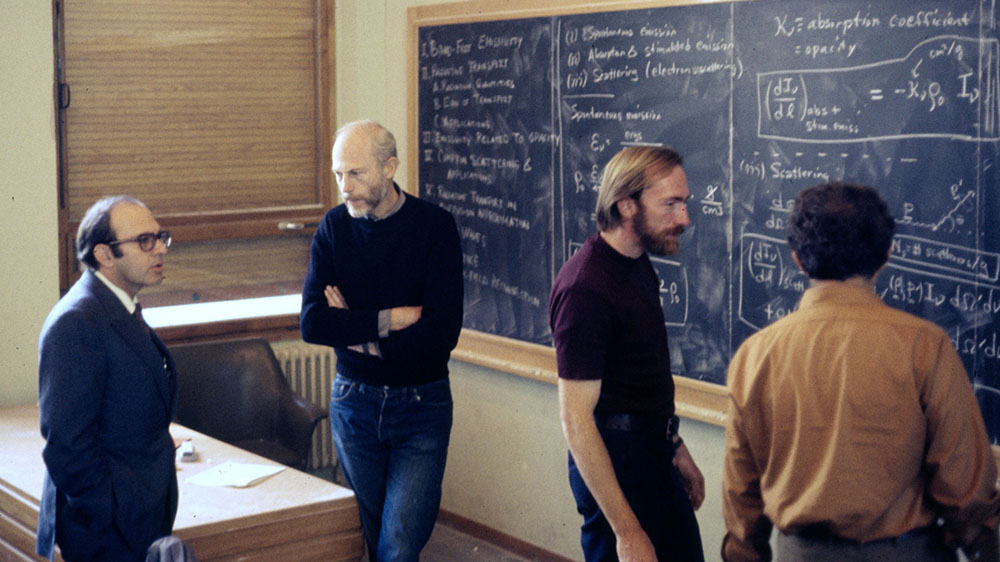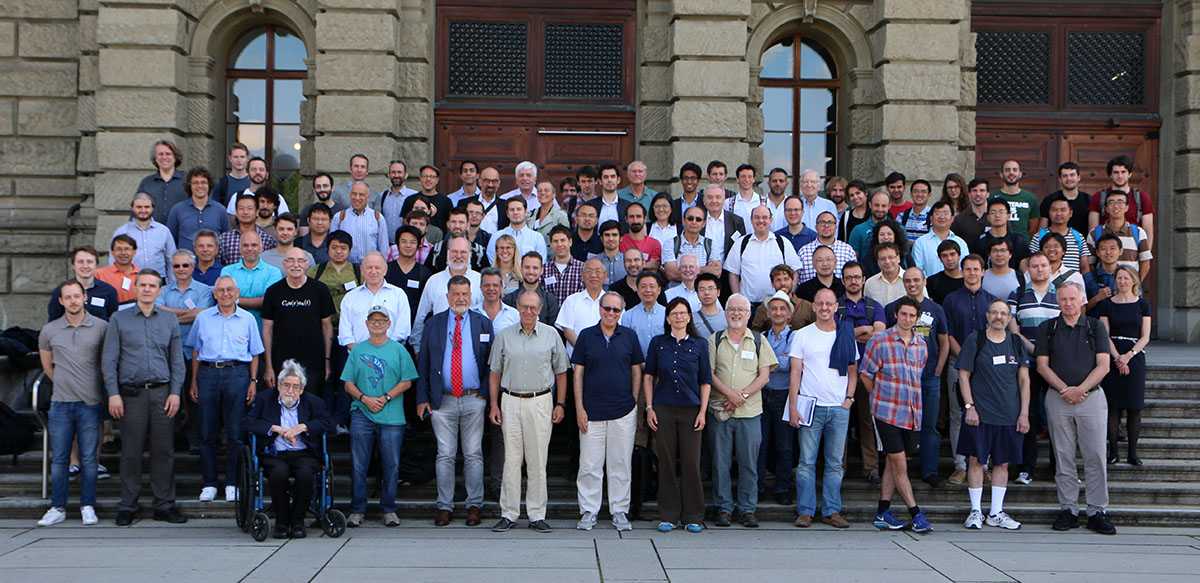A farewell to Demetrios Christodoulou
This coming Wednesday, 16 May 2018, Professor Demetrios Christodoulou will give his farewell lecture at ETH Zurich – looking back on a journey through mathematics and physics that has spanned nearly half a century.
"Christodoulou's work combines a deep understanding of […] physics with brilliant mathematical technique. This has allowed him to resolve central problems that have resisted progress for generations.” So wrote the Shaw Prize Selection Committee as it awarded Demetrios Christodoulou the 2011 Prize in Mathematical Sciences, shared with the American Mathematician Richard S. Hamilton [1]. The Shaw Prize – often referred to as the "Nobel of the East" – was one of many awards and distinctions bestowed on Christodoulou [2], for work that not only explored the interface between mathematics and physics, but ventured deeply into both disciplines.
Christodoulou's journey so far through the two disciplines has been an extraordinary one. Born in 1951 in Athens, to parents neither of whom had a formal higher education, he developed at the gentle age of 14 years “a burning interest in mathematics and theoretical physics” [3]. That interest was paired with talent, and his gift to tackle difficult problems was soon recognised. By the fall of 1968 he had been admitted to the graduate programme in physics at Princeton University (US), and at only 19 years of age he received his PhD, under the supervision of the famous theoretical physicist John Archibald Wheeler.
Matters of relative importance
Christodoulou devoted much of his career to the study of General Relativity, Albert Einstein's famed theory of gravitation. That theory rests on the geometric description of space and time. The related mathematical equations to describe four-dimensional spacetime – the Einstein equations – are famed for both their stunning conceptual elegance and for being notoriously difficult to study. Progress typically requires profound insight into the mathematical structure of the equations and the underlying physics they describe. That understanding Christodoulou, together with his students and co-workers, took to new levels. Developing, refining and perfecting the necessary tools and applying them to some of the toughest problems in the field, he achieved over the years and decades numerous breakthroughs, providing novel and often unexpected insight into the fabric of spacetime and into cosmological and astrophysical phenomena therein.
Already his very first paper, based on the results of his Master thesis and describing reversible and irreversible transformations in black-hole physics [4], is considered to be a seminal contribution, among the first that eventually led to the field of black-hole thermodynamics – a field that became more widely known not least through subsequent work of Stephen Hawking. Similarly, Christodoulou made early predictions about effects that a gravitation-wave detector should be able to see. His contributions were as many as they were broad; the papers and books Christodoulou authored and co-authored would provide inspiration and a solid foundation for generations of mathematicians and physicists.

At the centre of gravity
Christodoulou's academic career took him throughout the world, and he held professorships at the University of Athens (Greece), Syracuse University, the Courant Institute in New York and Princeton University (all US), before joining ETH Zurich in 2001.
Christodoulou was appointed jointly at the Departments of Mathematics and Physics of ETH. With him one of the leading experts in General Relativity came the birthplace of Einstein's career. In Zurich Einstein studied also under Hermann Minkowski, who developed the concept of combining three-dimensional Euclidean space and time into four-dimensional spacetime. And here is where several other scientists formed our understanding of the physical world by developing and applying the mathematical tools needed to study it – from Hermann Weyl and Wolfgang Pauli to Jürg Fröhlich, to name just a few.
Having arrived in Zurich, for Christodoulou started a time that he later called a period "of most intense intellectual effort", referring in particular to the years from 2001 to 2008 [3]. In this period he started exploring in depth connections between the Einstein equations of General Relativity and the Euler equations of fluid mechanics (named after the Swiss polymath Leonhard Euler). This work led to further breakthroughs in our understanding of spacetime, and to powerful mathematical tools that enable an ever-deeper exploration of its properties.
One occasion to celebrate Christodoulou and his outstanding achievements came last year, in the form of a conference in honour of his 65th birthday [5]. That event brought many of Christodoulou's former mentors and students as well as co-workers to Zurich, including – among many other distinguished guests – Fields medallist Shing-Tung Yau, Abel Prize awardee (together with John Nash) Louis Nirenberg and Barry Barish, who later in the year would receive the 2017 Nobel Prize in Physics, jointly with Kip Thorne and Rainer Weiss, for his contributions to the observation of gravitational waves.
Since February 2017, Demetrios Christodoulou is now emeritus professor, starting a new chapter in his remarkable life. On Wednesday he will share his "personal experience through mathematics and physics" – and give his colleagues, friends and the interested public an opportunity to say farewell to an outstanding man and scientist.
References
[1] The Shaw Prize committee: An Essay on the Prize in Mathematical Sciences 2011
[2] Demetrios Christodoulou: curriculum vitae
[3] The Shaw Prize website: external pageAutobiography of Demetrios Christodouloucall_made
[4] Demetrios Christodoulou: external pageReversible and irreversible transformations in black-hole physicscall_made. Phys. Rev. Lett. 25, 1596–1597 (1970)
[5] FIM – Institute of Mathematical Research: Mathematics, Physics, and their Interaction. Conference in Honour of Demetrios Christodoulou's 65th Birthday

